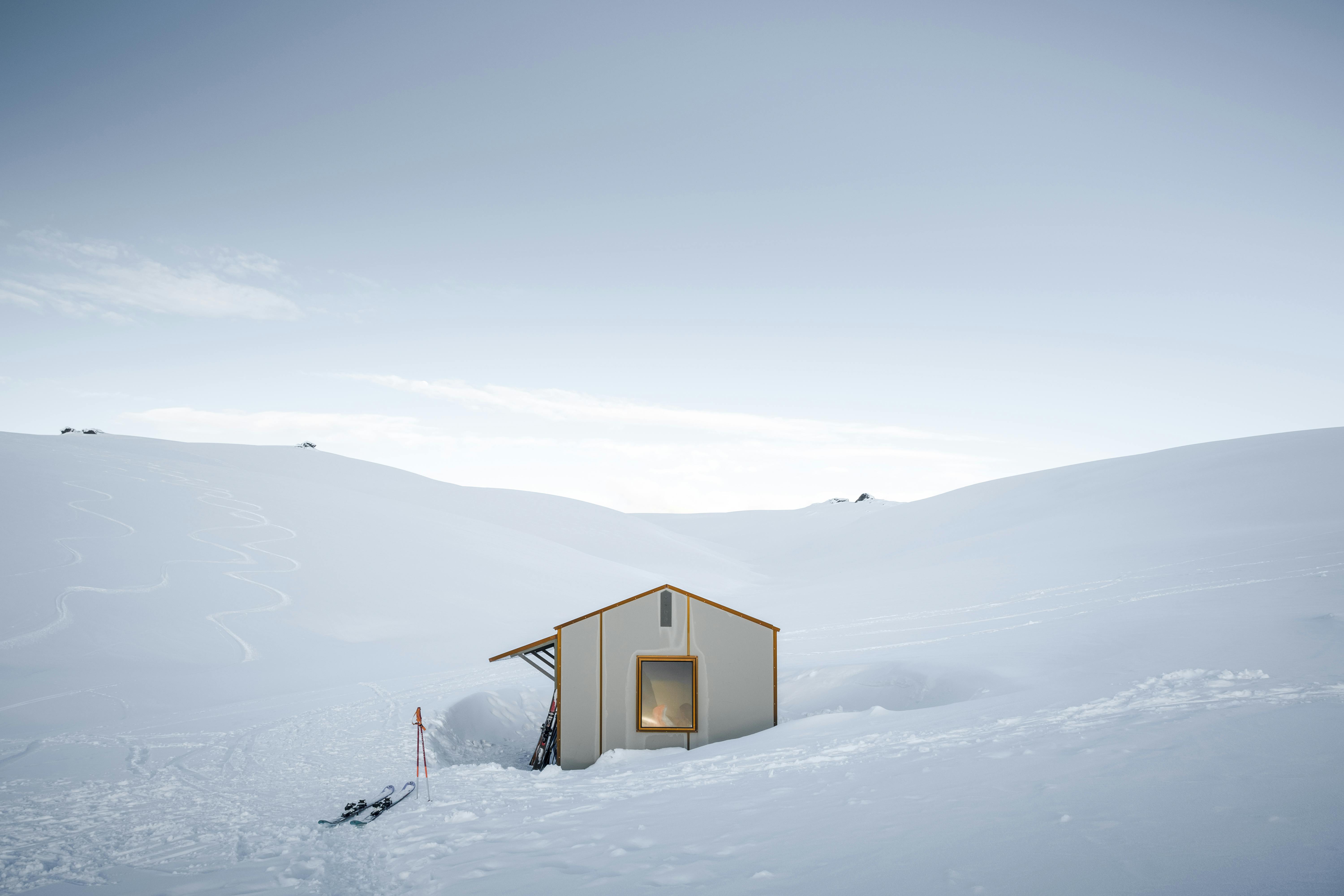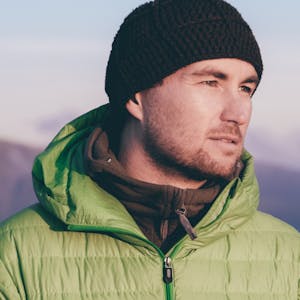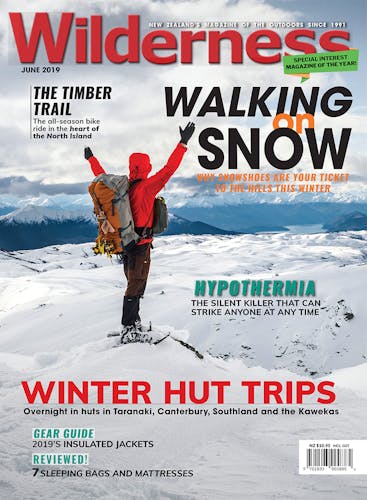A snowshoe exploration of the Pisa Range
It has been two years since my last snowshoe outing when I drive south from Christchurch. After many weather and health-related delays, I finally shoulder my 23kg backpack to conquer Mt Pisa. That sounds excruciating, but months of carrying water canisters up the hills behind my house have paid off.
Starting from Tuohys Gully, I set off with a bounce in my step despite the heavy load. Around me, the yellows and browns of Central Otago undulate into the heavy sky. After passing Meg Hut, specks of windblown snow start filling the hollows. Solid snow is still a long way off.
Ahead of me, the Pisa Range spreads out with its sprinkling of tors. These eroded rock formations shoot out of the ground like crumbly mushrooms. In summer, their greys and blacks fade into the landscape, but with a winter-white background they stand out spectacularly. I walk past the first few tors and then, finally, the time has come to strap on my snowshoes.
Snowshoes are fun, even when the experience is hard-earned. But always, the excruciating climb to gain the altitude where there is enough snow to use them is worth the effort. When I finally put my snowshoes on, I always feel like walking on sunshine. There’s no more need to concentrate on my footing, worrying about tripping, slipping or sinking to my knees. Snowshoes are truly the reclining chair of backcountry locomotion.
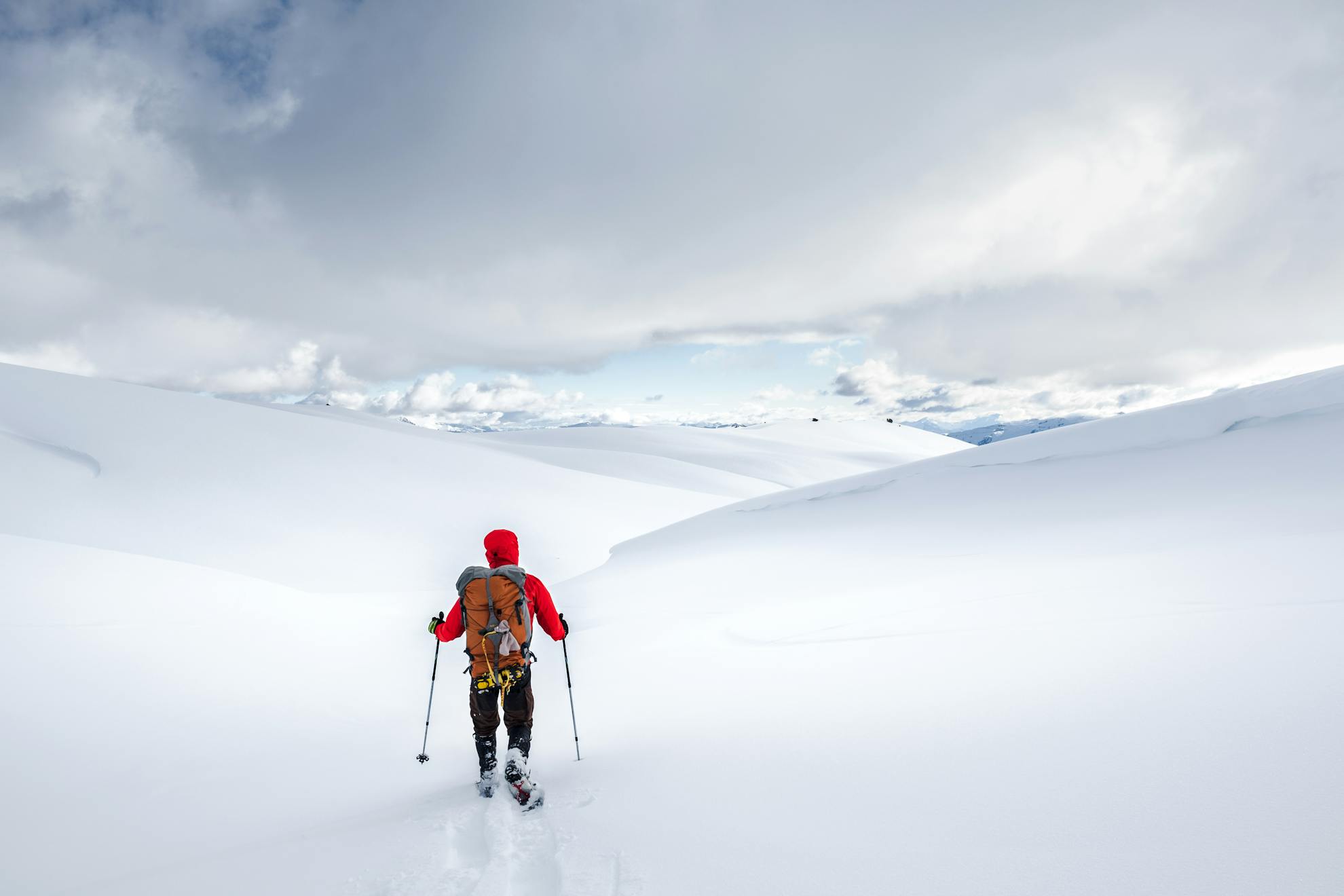
Since the trail has disappeared beneath a blanket of snow, I switch off my brain and wander up the hill in a straight line. It’s like walking on a well-maintained track that is not shared with anyone. The only thing to keep in mind is to not walk backwards. Due to their built-in hinges, the tail-end of a snowshoe is in permanent contact with the ground. Attempts at stepping backwards invariably end with a wet bum.
Skiers can relate to the elation of carving lines down a new slope. Seeing my own trail stretch out behind me for kilometres gives me a feeling of achievement that I don’t get on solid ground. After gaining over 1200m, my legs remind me that it is time to settle in for the night. I am somewhere between the track junction at Pt1440 and Mt Dottrel. Straight ahead, a group of tors on relatively flat ground look like a good place to rest. A little later the tent is barely up when clouds and snowfall swallow me for the night. Moving around outside the tent in a whiteout is disorienting. At times I can barely tell if I’m walking uphill or down. The world has turned into a featureless white blob. Time to retreat inside.
A calm night in clouds hovering around the freezing point is a recipe for a wet night. By morning, my sleeping bag is soggy and I have to stuff my down jacket inside to stay warm. When I finally convince myself to crawl outside, the tent is covered in a crust of ice worthy of a polar expedition. Fortunately, the clouds depart as quickly as they appeared, providing a chance to dry out the sleeping bag.
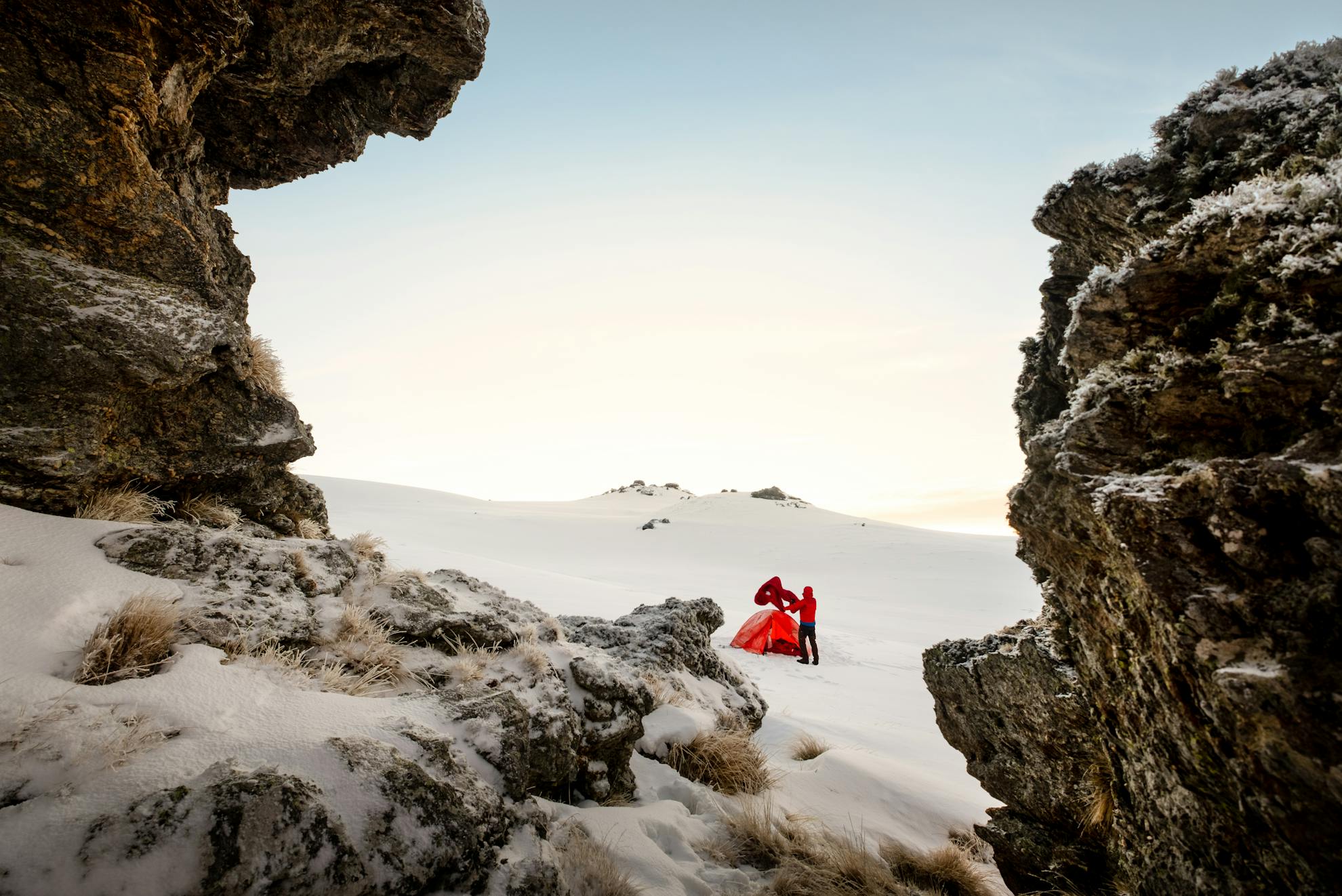
How to get started
The beauty of snowshoeing lies in its low bar to admission. Just rent a pair of snowshoes and pay your closest ski field a visit. No skiing or snowboarding experience required. Strap on your snowshoes and walk for a few metres. Congratulations, you are a snowshoe expert! Just avoid backwards shuffles, since the hinges in your snowshoes will make them dig in, leaving you with a wet backside.
Using hiking poles will help with balance – remember to put snow baskets on them.
As usual, common sense applies: Stay warm and stay safe. A snowcraft course will help you make good decisions in the wintery outdoors.
Snowshoeing pros and cons
The good
- Affordable equipment
- No skiing skills required
- Easy to learn
The bad
- Limited choice of snowshoe terrain in New Zealand
- Winters are short
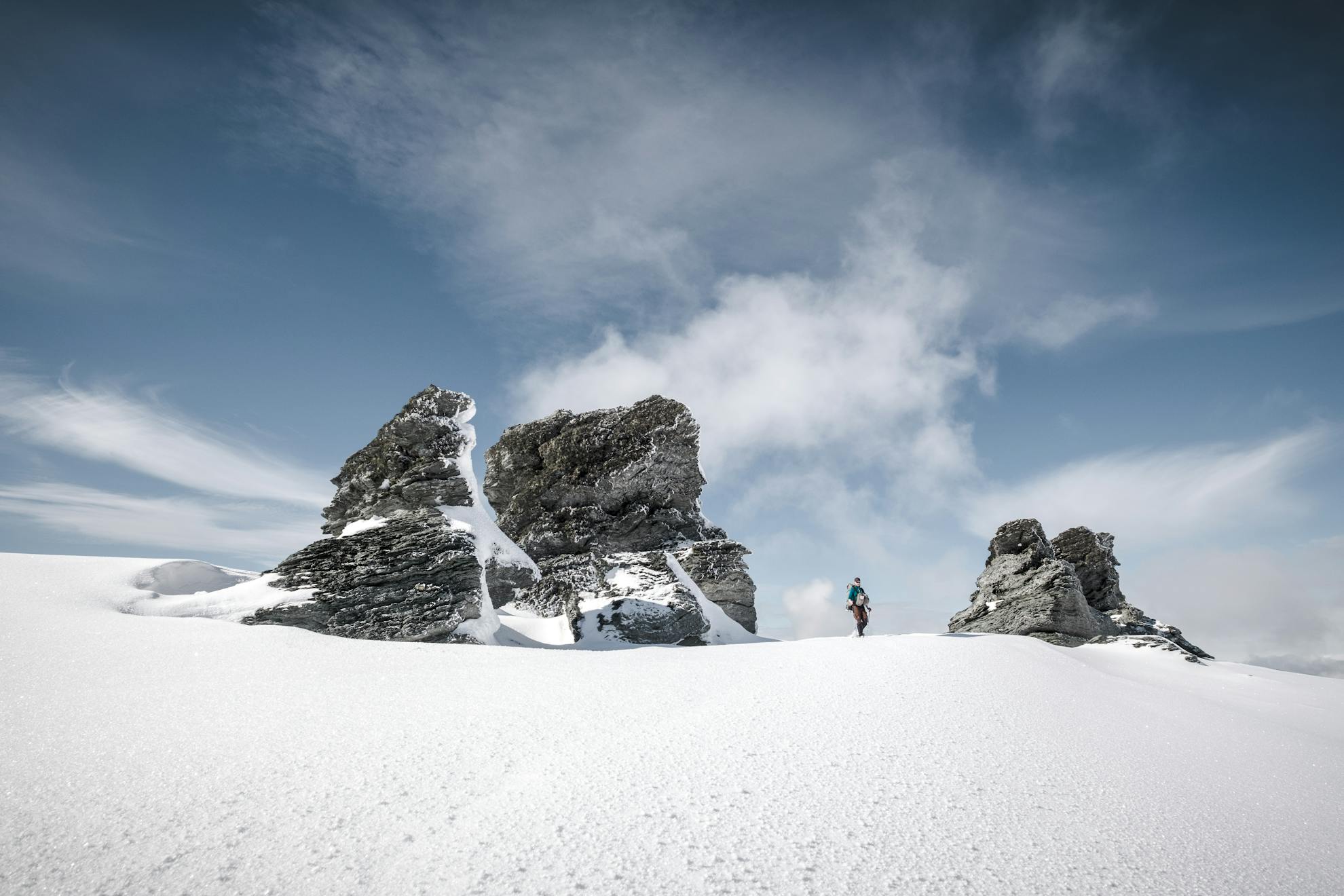
I shovel breakfast into my face with a snow peg (penance for forgetting my spoon) and receive the latest weather forecast. Locals had told me that forecasts that winter were unreliable, and this trip is no exception. A week of fine weather and sunshine had turned to a gale forecast for the coming night, forcing a rethink of my plans. The Pisa Range is beautiful, but it offers precious little protection from the wind. My last clash with such strong winds almost shredded my tent, and I’m not keen on repeating the experience. The closest safe haven is at Kirtle Burn Hut, which more than doubles my planned walking distance for the day.
The range flattens out ahead, and progress becomes fairly easy. All around, clouds are roiling in a beautiful display that heralds the stormy night ahead. By the time Column Rocks are reached, I can see the first backcountry skiers on the horizon. With a ski field only a few kilometres away, the mountain will get a lot busier. I picked Snow Farm as my destination since it would spare me the gruelling downclimb to Cardrona. Meeting a grand total of only five people is really not a big deal, but I can’t help but feel I’m being dragged out of my happy cocoon of solitude.
The sunset at Kirtle Burn Hut is an impressive display of shape and colour. My decision to hide out in a hut was the right one. Next morning, at 6am, the hut is in full whiteout with strong, ice-cold winds blasting through the valley. Conditions on the ridge would be hellish. Visibility is so poor that I use the snowcat track back to Snow Farm as a guide.
I can barely see five metres ahead, and more than once step into thin air as the track starts sloping downhill. Finally, at the edge of the ski field, I am glad that the end of the trip is near. Wilderness turns into a carefully groomed theme park as Chinese and US Olympic athletes zip past on cross-country skis.
Waiting for a ride back to Cardrona gives me some time to think. I wish the weather had allowed me to stay just a little longer. It is a shame that the backcountry winter season in New Zealand is so short. But when I finally lift my orange beast of a pack into the car, I already have my eye on next year’s snowshoe mission.
– Dennis is a professional photographer and teaches photography at heroworkshops.com
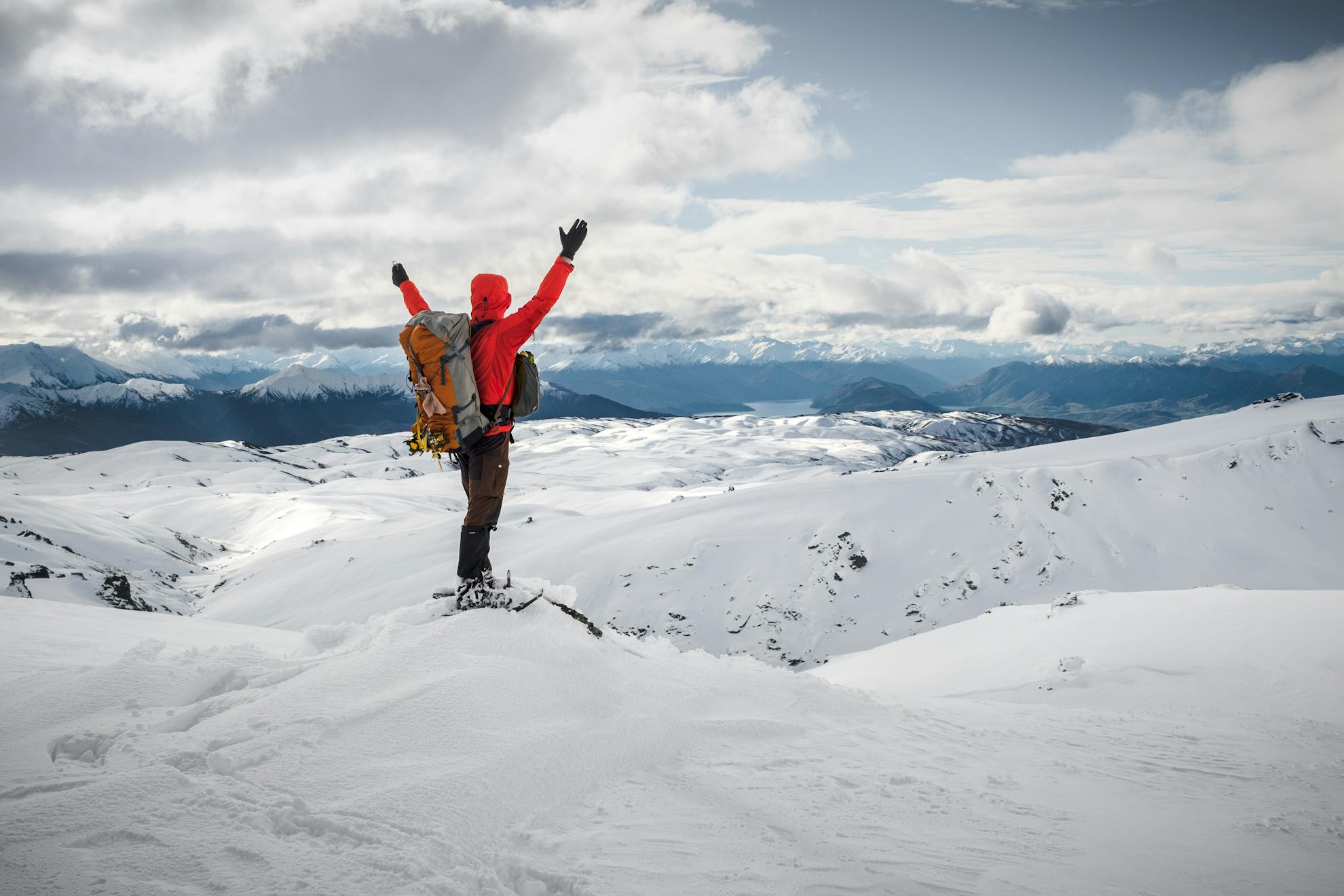
- Distance
- 32.8km
- Total Ascent
- 1169m
- Grade
- Moderate / Difficult
- Time
- Two and a half days or 15hr
- Accom.
- Camping, Meg Hut ($5, eight bunks), Kirtle Burn Hut ($5, seven bunks)
- Access
- Tuohys Gully car park. Return from Snow Farm by shuttle bus or prearranged transport (note: access to Snow Farm land incurs a usage fee)
- Map
- CB12
GPX File
- Kirtle Burn Hut via Meg Hut. (gpx, 17 KB)
GPX File
- Your device does not support GPX files. Please try a different device.





